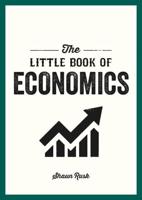Publisher's Synopsis
The contributors to this volume are concerned with the type of drastic innovation called general purpose technologies (GPTs). A GPT has the potential to affect the entire economic system and can lead to far-reaching changes in such social factors as working hours and constraints on family life. Examples of GPTs are the steam engine, electricity, and the computer.Traditionally, economists have considered the accumulation of conventional inputs such as labor and capital to be the primary force behind economic growth. Now, however, many macroeconomists place technological progress at the center of the growth process. This shift is due to new theoretical developments that allow researchers to link microeconomic aspects of the innovation process with macroeconomic outcomes.Most economists have viewed technological progress as an incremental process. A few have focused on the role of drastic innovations-those that introduce a discontinuity. The contributors to this volume are concerned with the type of drastic innovation called general purpose technologies (GPTs). A GPT has the potential to affect the entire economic system and can lead to far-reaching changes in such social factors as working hours and constraints on family life. Examples of GPTs are the steam engine, electricity, and the computer. The study of GPTs is relatively new. A universal theoretical framework for dealing with GPTs does not yet exist. The essays in this book both further our understanding of GPT-driven economic growth and lay the foundation for further developments of the available frameworks.ContributorsPhilippe Aghion, Ciff Bekar, Timothy Bresnahan, Kenneth Carlaw, Alfonso Gambardella, Richard G. Harris, Elhanan Helpman, Peter Howitt, Richard G. Lipsey, Kevin M. Murphy, Craig Riddell, Paul Romer, Nathan Rosenberg, Manuel Trajtenberg








